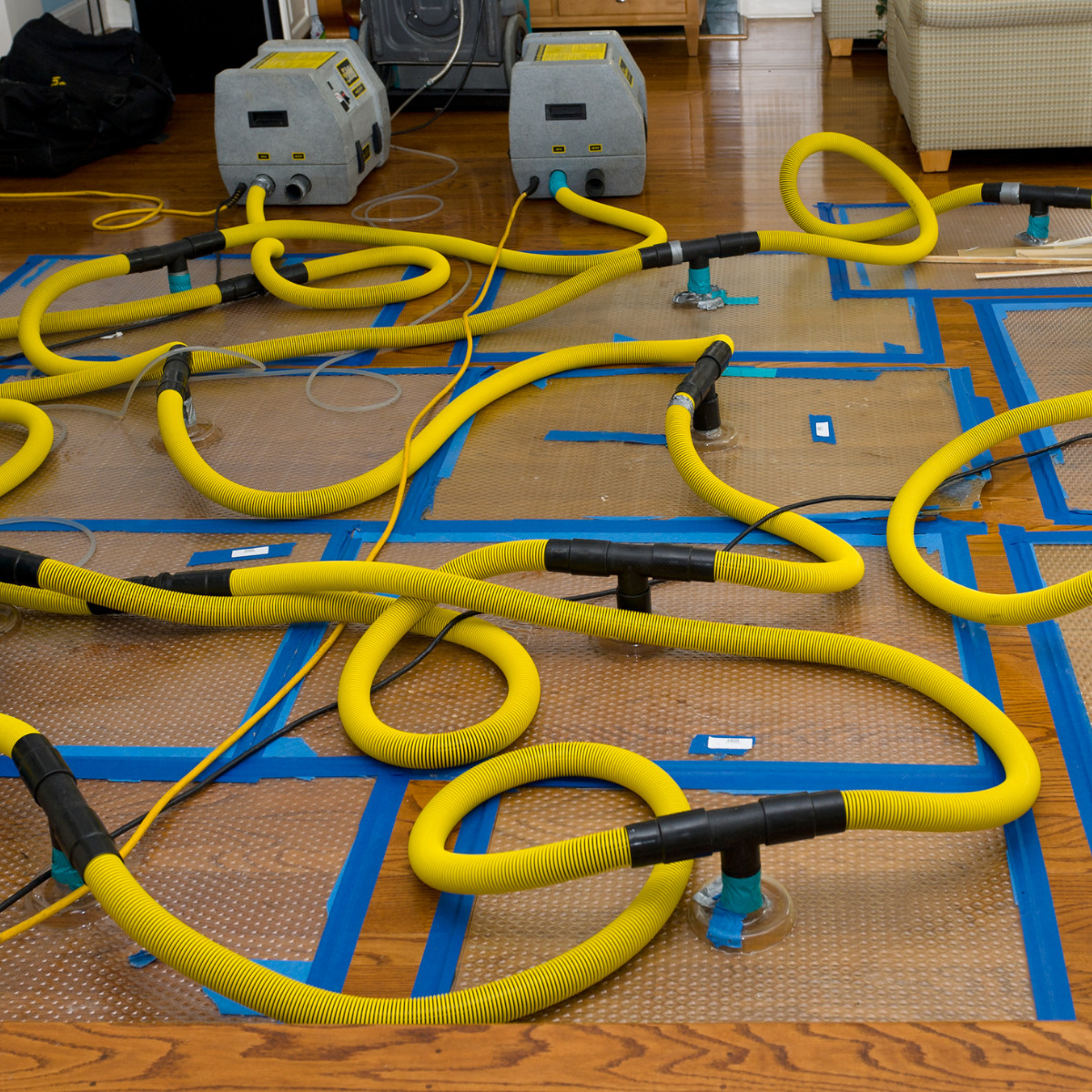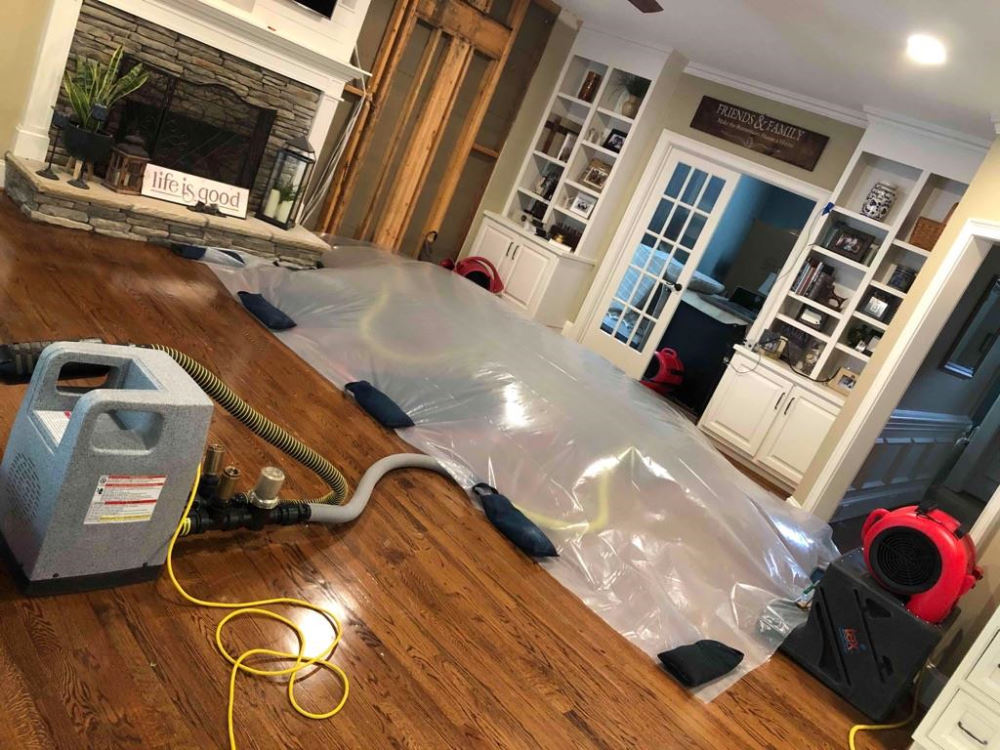Crucial Actions to Follow for Efficient Water Damage Repair in your house
When encountered with water damage in your house, understanding the essential steps for efficient reconstruction can make all the difference. You need to analyze the damages and warranty safety and security prior to dealing with the issue. Quiting the resource of water is vital, however it's just the beginning. Once you have actually handled that, there's a collection of activities you need to take to protect your home from more concerns. Let's discover what you need to do next.
Analyze the Damages
When you discover water damages in your house, the first action is to analyze the damages completely. Start by recognizing the source of the water invasion. Look for leakages, burst pipelines, or various other problems causing the issue. Next off, examine the impacted areas for visible indicators of damage, including mold and mildew, staining, or bending growth. Do not fail to remember to search in covert spots like behind walls or under floor covering, as water can permeate right into these locations unnoticed.Document the damages by taking clear photos and notes. This will assist you when reviewing the scenario with your insurance policy service provider or restoration experts. Take notice of the kind of materials impacted, as various materials call for different reconstruction strategies. Lastly, assess the level of the damage. Is it extensive or minor? Understanding the extent will guide you in deciding whether to handle it on your own or contact the professionals for an extra considerable reconstruction process.

Ensure Security
Before you begin any type of restoration job, guaranteeing your safety and security is crucial. Evaluate the condition of your home. If the water's deep or if you observe electric dangers, do not go into the location. Turn off the electricity and gas supply to stop mishaps. Wear protective equipment like boots, masks, and gloves to protect yourself from impurities or mold.It's vital to stay conscious of your surroundings; expect unsafe surfaces and sharp objects. If the water is from a sewer back-up, treat it as harmful waste. Maintain animals and youngsters far from influenced locations to stay clear of exposure.Once you've taken these precautions, you can continue with the repair procedure. Remember, your security comes first, and if you're ever before unsure, it's ideal to consult a professional. Taking these steps will aid ensure you prepare to deal with the remediation securely and effectively.
Stop the Resource of Water
After ensuring your safety and security, the following action is to stop the source of water. Recognize where the leak is originating from. It could be a ruptured pipeline, a defective home appliance, and even heavy rainwater entering via a damaged roofing. If it's a plumbing concern, switch off the primary water system to your home to avoid further flooding. For home appliances, unplug them and shut off their water valves.If the source is outside, like rainwater, try to divert it far from your home making use of sandbags or various other barriers. For minor leakages, you could be able to make use of tape or a sealant briefly till a professional can fix it. Keep in mind, dealing with the source swiftly is necessary to reducing damages and stopping mold and mildew development. Once you have actually quit the water, you'll remain in a far better placement to relocate on to the next actions in the reconstruction procedure.

Get Rid Of Excess Water
Act promptly to eliminate excess water, as standing water can lead to a lot more substantial damage and mold development. Gather your tools: a wet/dry vacuum cleaner, containers, and towels. If the water is shallow, you can make use of towels to soak up the wetness. For deeper water, a wet/dry vacuum is your best bet. Make certain to clear the vacuum frequently to avoid overflow.If the water is polluted, like from a sewer backup, use protective gear, including gloves and masks, to keep on your own secure. As soon as you have actually gotten rid of as much water as possible, look for surprise pockets of moisture in edges and under furnishings, as these can nurture mold.Don' t forget to switch off electrical devices and power electrical outlets in damp areas to avoid risks. This preliminary step is vital in reducing damage and setting the phase for an effective remediation process.
Dry and Dehumidify the Area
Once you've eliminated the excess water, it's necessary to dry and evaporate the area extensively. Start by utilizing dehumidifiers effectively to pull moisture out of the air and prevent mold growth. Watch on humidity levels to ensure the space dries out completely.
Get Rid Of Standing Water
To successfully take on water damage, you require to concentrate on eliminating standing water as swiftly as possible. Beginning by collecting necessary devices, like a wet/dry vacuum cleaner or a pump, relying on the quantity of water. A vacuum must do the technique if the water is superficial. For bigger amounts, a pump is a lot more reliable. While functioning, make certain to wear protective gear to maintain on your own risk-free from impurities. As you remove the water, pay focus to concealed locations like under furniture or in corners where water might gather. As soon as you've removed the bulk, your area will start to dry out. This step is crucial, as remaining water can bring about mold growth and a lot more considerable damages.
Usage Dehumidifiers Effectively
Exactly how can you properly use dehumidifiers to dry and dehumidify your area? Start by positioning your dehumidifier in the most affected area, ideally where water damages is most severe. Make certain to close all doors and windows to create a closed atmosphere. Switch on the dehumidifier and established it to the suitable moisture level, normally around 30-50%. Vacant the water collection tank often, or think about making use of a model with a constant drain option for ease. When possible, use fans to enhance air movement, helping the dehumidifier job extra efficiently. Keep the dehumidifier running till you're confident that the location is extensively dried out, avoiding mold development and additional damage more info (Water Damage Cleanup). This action is necessary for efficient water damage restoration
Monitor Humidity Degrees
Surveillance humidity degrees is essential during the drying out process, as it aids ensure your room remains devoid of excess dampness. Purchase a trusted hygrometer to track humidity accurately. Ideally, you intend to preserve degrees in between 30% and 50%. If humidity readings climb over this array, you might need to readjust your dehumidifiers or followers to enhance air flow. Check the readings routinely, specifically in areas vulnerable to dampness, like basements or restrooms. If you notice relentless high humidity, take into consideration raising ventilation or using extra dehumidifiers. Staying on top of these levels not only speeds up the drying procedure however likewise protects against mold development, guaranteeing your home stays risk-free and comfy.
Tidy and Disinfect Affected Surfaces

Recover and Repair Your Home
After cleaning and sanitizing the impacted locations, it's time to bring back and repair your home. Begin by reviewing the damages. Look for structural problems, like weakened wall surfaces or floorings, and attend to any type of needed fixings. Replacing damaged drywall or flooring is important for both visual appeals and safety.If your furniture or valuables were affected, take into consideration whether they can be recovered or need substitute. Clean or expertly restore things where possible.Next, repaint walls and touch up any kind of locations that need interest. This not only enhances appearance yet likewise shields surfaces from future water damage.Don' t forget to check your plumbing and appliances for leakages, making sure whatever's working correctly. Finally, consider setting up a dehumidifier to stop future dampness concerns. By taking these steps, you'll restore your home to its previous magnificence and produce a more secure living setting.
Frequently Asked Concerns
For How Long Does Water Damage Restoration Typically Take?
Water damage remediation generally takes anywhere from a couple of days to several weeks, relying on the degree of the damages (Water Damage Restoration St George UT). You'll want to examine the circumstance promptly to decrease additional difficulties and ensure proper restoration
Will My Insurance Coverage Cover Water Damages Remediation Costs?
Your insurance coverage may cover water damage reconstruction costs, but it depends upon your plan. Check your coverage details and contact your insurance agent to clarify what's consisted of and what you require to file an insurance claim.
Can I Handle Water Damages Reconstruction Myself?
You can take care of water damages reconstruction on your own, yet it's crucial to assess the circumstance. You could want to call specialists if it's comprehensive. Always prioritize security and ensure you've obtained the right devices.
What Are the Indicators of Hidden Water Damage?
You may discover indications of hidden water damage like warped walls, stuffy odors, or discoloration. If your floorings really feel squishy or you area mold and mildew, it's time to check out additionally prior to the situation intensifies.
How Can I Prevent Future Water Damage in My Home?
To stop future water damage in your home, you need to regularly inspect pipes, seal splits, preserve seamless gutters, and assurance proper drainage. Mounting a sump pump and moisture obstacles can also help maintain your space dry. When you discover water damage in your home, the very first step is to evaluate the damages extensively. Act promptly to eliminate excess water, as standing water can lead to extra extensive damages and mold and mildew growth. To efficiently deal with water damages, you need to focus on eliminating standing water as promptly as feasible. As you get rid of the water, pay attention to hidden locations like under furniture or in corners where water could gather. Water damage repair commonly takes anywhere from a couple of days to numerous weeks, depending on the extent of the damage.
Comments on “The Homeowner’s Ultimate Guide to Water Damage Cleanup After a Flood or Leak”